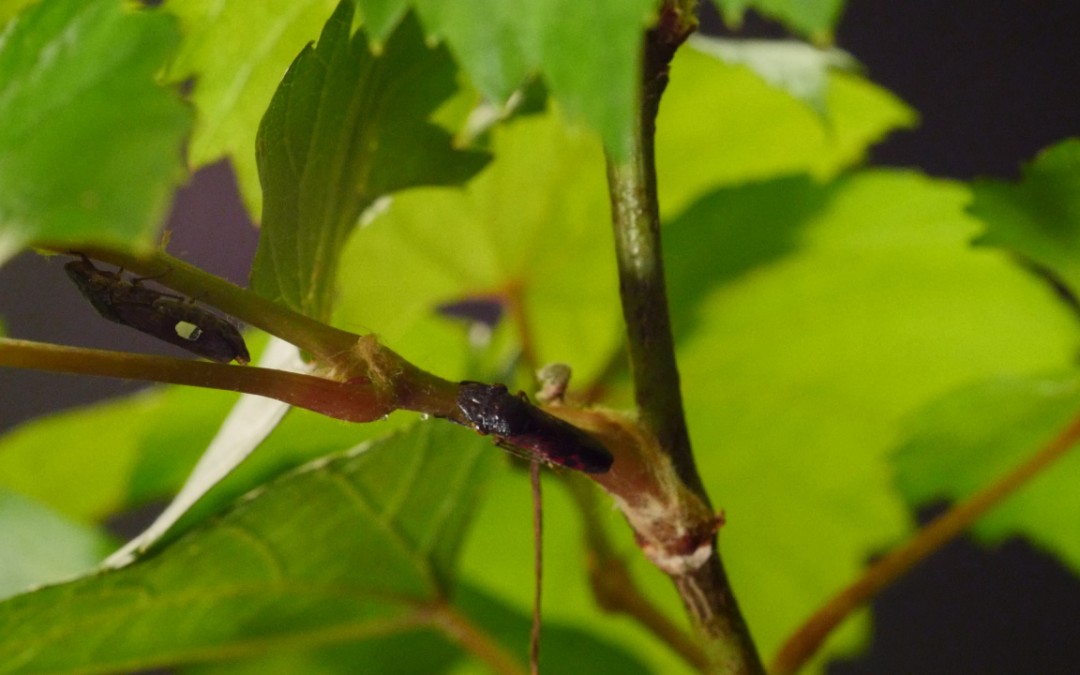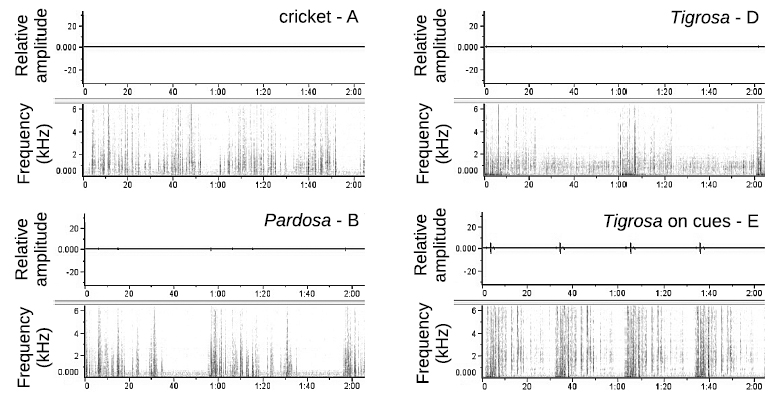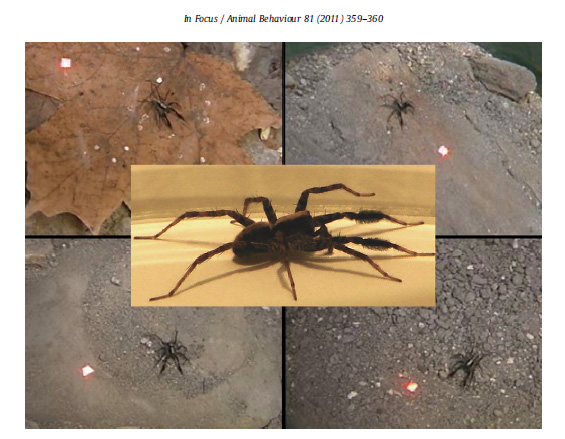
by Shira | Feb 18, 2017
The glassy-winged sharpshooter (GWSS), Homalodisca vitripennis, is an important vector of Xylella fastidiosa, the causal agent of Pierce’s disease of grapevine. GWSS control relies mainly on insecticides; therefore, an alternative method, such as vibrational mating...

by Shira | Oct 9, 2016
Predators may inadvertently signal their presence and threat level by way of signals in multiple modalities. We used a spider, Pardosa milvina, known to respond adaptively to chemotactile predator cues (i.e., silk, faeces and other excreta) to evaluate whether it...

by Shira | Dec 9, 2010
Communication in complex environments poses challenges of potential loss of intended messages, but some animals may compensate by using multimodal signalling. Courtship displays of male Schizocosa ocreata (Hentz) wolf spiders are multimodal, consisting of visual and...





Recent Comments